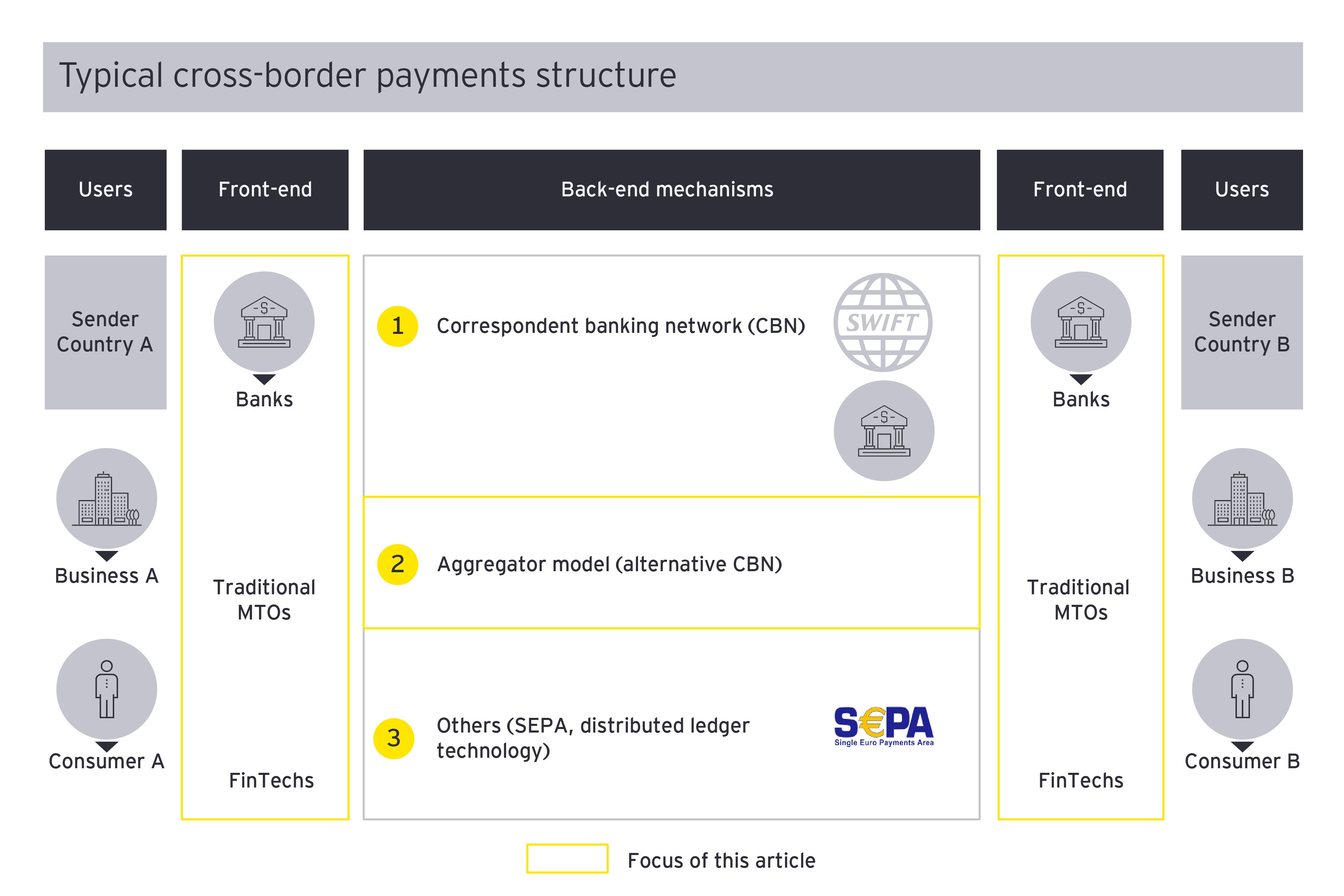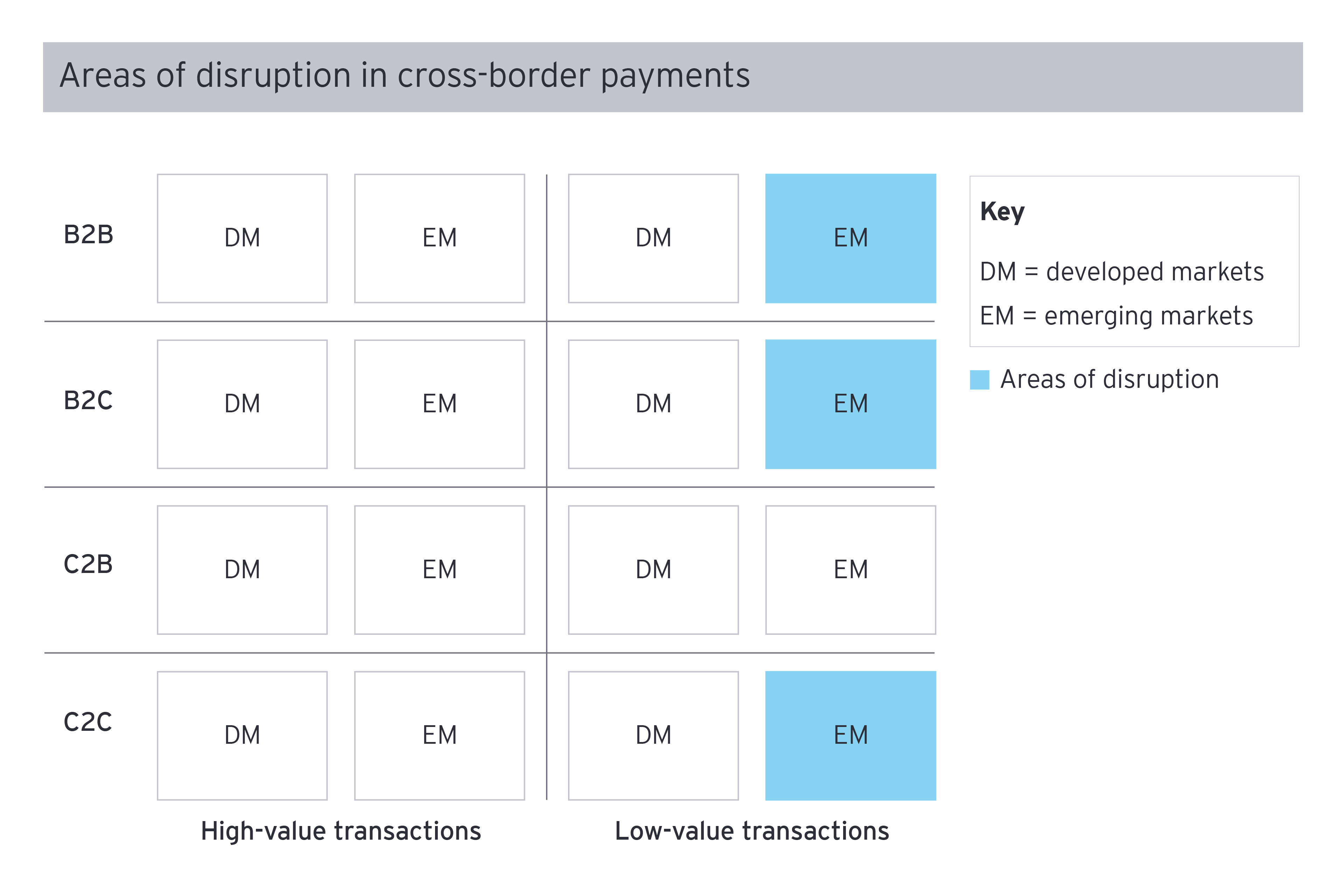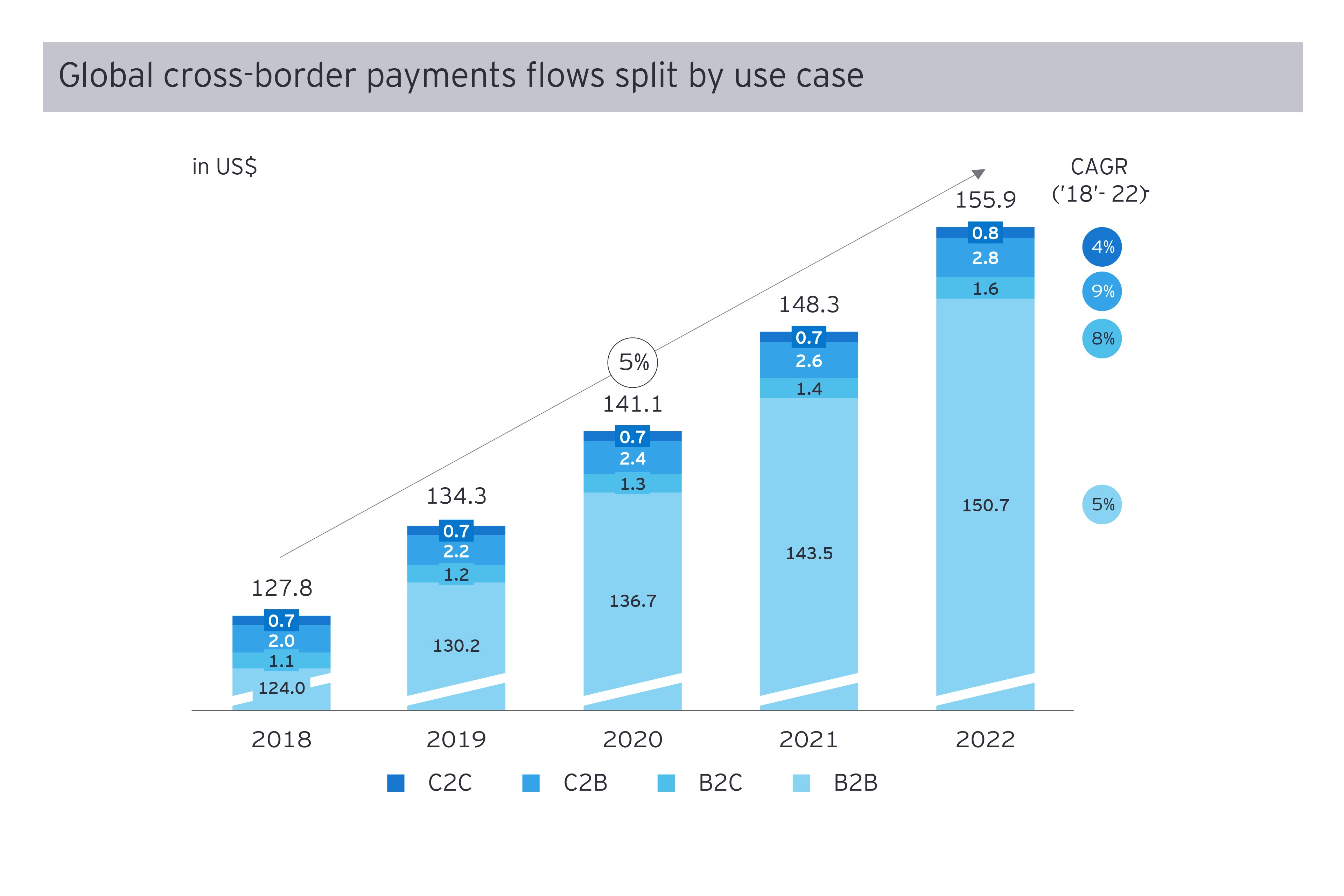Three trends reshaping cross-border payments
Trend 1: Changing consumer demands
The increased pace of change in the cross-border payments market is closely connected to rapidly changing consumer demands. Consumers are less willing to pay for banking services while expecting them to be fast and intuitive. The increasing penetration of smartphones, and popularity of digital access points like alternative payments methods (APMs) for remittances, have created new demands that incumbents are struggling to meet. Alternative solution providers that offer faster, cheaper, and more transparent cross-border payment solutions can gain a competitive advantage over banks.
Trend 2: Increasing trade with emerging markets
One major trend within cross-border payments is the growing focus on emerging markets in Africa, Latin America, and Asia, as their share of international transactions increases. Overall, global cross-border trade is expected to grow by around 5% (CAGR) between 2018 and 2022, with much of this coming from emerging markets where growth is estimated at around 11% (CAGR) between 2018 and 2022, stimulated by initiatives such as the African Continental Free Trade Area and China’s Belt and Road Initiative. In contrast, protectionist policies in developed markets, including Brexit and US trade tensions, are expected to slow growth to around 2% (CAGR) between 2018 and 2022.
Trend 3: Accessibility of mobile phones and e-payments
As mobile phone ownership increases, more people around the world have access to banking services and e-payment solutions. The percentage of mobile phone ownership among adults in emerging economies has risen to around 83% (PEW Research), boosting financial inclusion – by 2017, 69% of the world’s population had a bank account and/or mobile wallet, up from 62% in 2014 (Worldbank).
The figure is expected to increase in coming years with mobile wallets forecast for significant growth. Global mobile wallet usage at the point-of-sale (POS) is expected to shift from c. 22% in 2019 to c. 30% in 2023, while mobile wallet usage in e-commerce is forecast to grow to more than half (c. 52%) in 2023, from c. 42% in 2019 to c. 52% in 2023 (Worldpay). This growth is increasing cross-border commerce volumes.
Together, these trends create the need for new business models and value propositions that address the pain points of the existing process with correspondent banks.
The rise of the specialists: New entrants challenge incumbents with innovative business models
These trends and the traditional pain points around cross-border payments – delays, high costs, and lack of transparency – have ushered in the arrival of two groups of new specialized players: digitally-enabled money transfer operators and back-end networks.
Digitally-enabled money transfer operators
Deal directly with senders – the consumer or merchant – and offer digital cross-border payments as their core business. When working with liquid currency pairs (e.g., USD/EUR), these providers typically establish direct banking relationships within the sending and receiving countries, with net payment flowing between these countries. However, in many emerging markets, setting up a bank account can be challenging and capital controls often hinder outflows of payments. Financial inclusion in these countries also tends to below, and payment methods are highly fragmented. These conditions mean that digitally-enabled money transfer operators often rely on partners, such as back-end networks, in these countries.
Back-end networks
Typically do not have a direct relationship with the sending or receiving party, but instead partner with the bank or wallet providers of these parties. By establishing partner networks via direct connections with local banks and APMs in both liquid and illiquid markets, back-end networks enable interoperability within cross-border payments. For example, a Paypal account can transfer a deposit in Euro to an M-Pesa account in Kenia Schilling. As this is not possible with CBNs, front-end providers are increasingly using these alternative back-end networks instead of using traditional bank rails.
The high fragmentation of the global payments market and differing regulatory requirements mean back-end networks typically focus on a certain set of countries or regions. As a result, a sending partner, such as an MTO, will need to connect to a number of back-end networks to offer a truly global solution to customers.
Back-end networks typically utilize an aggregator model. Aggregating payments reduces costs, as most cross-border fees are incurred as a fixed fee per transaction. Also, to enable real-time confirmation of payments, back-end providers typically require prefunding of their sending partners as collateral. This prefunding by the sending partner allows back-end providers to credit the recipient's account in real-time once the transaction is initiated.
The aggregator business model is particularly applicable to transactions within the C2C, C2B, and B2C segments, which are typically of low-value. Back-end networks can settle these transactions faster, cheaper, and with more transparency than those processed by CBN's.
Aggregator models are less successful within the B2B segment, where average transaction values are often higher than US$50,000. Ensuring capacity to prefund such high values would require senders to significantly increase working capital requirements. These models also offer less potential to reduce costs, as the current unit economics for B2B transactions are better, due to the higher average value and fixed nature of fees. For these reasons, almost all high-value B2B cross-border payments are still processed through CBN's.





